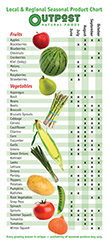Week 46 - An Einstein I'm Not

Week 46 - An Einstein I'm Not
A Year of InconvenienceFor one year, I'm making everything from scratch and forgoing convenience foods. Join me on my journey! By Pam Mehnert on March 7, 2011
What does a middle-aged German girl like me know about bagels? Well I know they were a childhood favorite of mine growing up in the 1960’s in a community with one of the first bagel shops in the area. Bagels and lox were a treat in our house and I learned to appreciate both the appropriate texture and flavor at a very young age. We didn’t have the Brugger’s or Einstein’s shops known today - no these shops were small local bakeries that perhaps learned the craft of bagel baking in New York or Chicago - and opened up in my neighborhood I’m guessing on the demand from the Jewish community.
What do I know about bagels today? Well first of all I haven’t eaten a bagel in more than 46 weeks. Prior to my voyage into the from scratch food routine, I had avoided bagels for a couple of years because of the calorie content – a whopping 72 calories per ounce – or about 364 calories for an average size bagel. Spread on the cream cheese and we’re talking 1/3 of the calories I might consume in an entire day. But I got a craving for bagels this week and naturally if I wanted them, I would have to make them myself.
Research led me to the particular recipe I’ve included in this post – not too technical for my abilities – but descriptive of what I remembered about the texture and flavor of a really authentic bagel. A bagel by definition is known as dense, chewy and rather doughy with a nicely browned and crispy crust. That’s the bagel I was in search of!
Naturally I wanted some kind of cheese spread to go along with my bagel. Since I didn’t have the necessary mesophilic starter for cream cheese, and since I was hoping to do something low-fat, I decided to use this recipe that I’ve had my eye on since getting my cheese making book for Christmas. It’s super simple to make, and since you add your own salt and/or herbs, it can take on whatever flavor profile you love. I was happy to see Meyer lemons were in season, as they tend to be a bit sweeter than regular lemons (they are a cross between a lemon and either a mandarin or common orange).
While these two recipes took up a big part of my Sunday time (ie: I prepared no other food for the week), they were really worth the effort. I brought the majority of them into work today at the delight of my co-workers, or at least that’s what they tell me. Enjoy!
Meyer Lemon Cheese
½ gallon milk (I used 2%, you need a little milk fat)
¼ cup lemon juice (I used Meyer Lemons)
½ teaspoon salt
1 tablespoon chopped fresh basil or other herbs
Heat the milk on the stove in a large pot, stirring frequently until it reaches 185-195°. Remove from the head, add the lemon juice to the milk, and stir. Cover the pot immediately and let rest for 15 minutes.
After 15 minutes check you curds and whey. The whey should be clear and not milky. If it’s milky, add a little bit more lemon juice to the pot and wait a few minutes more.
Pour the curds into a colander lined with cheesecloth. I save the whey from both the curds dripping through the cheesecloth as well as from the rest of the cheese-making process. (see week 41)
Tie the corners of the cheesecloth and hang the curds over a bowl to drain for about an hour. Remove the curds from the bag and add the salt and herbs. My cheese was a bit dry, so I just added back some of the whey I had saved to make it creamier.
Store in a covered container in the refrigerator for 1-2 weeks, if it lasts that long.
Bagels (from the book, Artisan Bread in Five Minutes A Day, by Hertzberg and Francois)
For The Dough
3 cups lukewarm water (100°F)
1 ½ tablespoons active dry yeast (2 packages)
1 ½ tablespoons Kosher salt
1 ½ tablespoons sugar
6 ¼ cups bread flour
Extra flour for dusting
Sesame seeds and/or poppy seeds
For The Boiling Pot
8 quarts water
¼ cup sugar
1 teaspoon baking soda
This dough mixes best using a 14-cup capacity food processor with dough attachment, or a heavy-duty stand mixer with a dough hook. Mix the yeast, salt, and sugar with the water in the bowl of your mixer or food processor. Add the flour to form what will become a very sticky dough. If you don’t have a machine to use, keep your hands wet to incorporate all of the flour.
Cover the dough and allow it to rest at room temperature until the dough rises and collapses (or flattens on the top), approximately 2 hours. You can use the dough immediately, but it may work better refrigerated for a few hours. I also read in Mark Bittman’s book, that refrigerating or resting the dough for several hours will also contribute to a more developed flavor.
Twenty minutes before baking time, preheat your oven to 450°F, with a baking stone (preferably) in the middle rack and an empty broiler tray or cast iron pan below. You will use the second pan to create steam. If you don’t have a baking stone, a lightly oiled baking sheet should work.
Generously dust the surface of the refrigerated dough with flour and cut off a 3-ounce piece of dough about the size of a small peach. Dust the piece with more flour (on your counter top as well) and shape it into a ball by stretching the surface of the dough around the bottom on all four sides, rotating the ball a quarter turn as you go. (Tuck and spin, tuck and spin. You’re creating elasticity in the dough.) Set the dough ball on a floured surface and keep working the rest of the dough. Cover the balls loosely with a towel that has been lightly floured (you’ll use this towel again in a bit). Let the balls rest for 20 minutes.
Start you water boiling (don’t forget to add the sugar and baking soda once it begins to boil).
Next, punch your thumb through the dough ball to form the hole. Hold the dough in your hands and ease the hole open with your fingers as you rotate the dough in a circle. Your dough should look like a fat bicycle tire. The hole will get smaller as the dough rests, so don’t worry that it’s too big.
Drop the bagels into the simmering water one at a time, making sure they are not crowding one another (3-4 at a time). Let them simmer for 2 minutes, then turn them over to cook for one more minute.
Remove them from the water with a slotted spoon and place them on a clean kitchen towel (the one you used to cover them) that is lightly floured. This will help absorb some of the excess water and keep them from sticking.
Place the bagels on a well-floured peel if you’re using a baking stone, or on a lightly greased baking sheet if you’re not using the stone. Sprinkle with poppy seeds and/or sesame seeds.
Slide the bagels directly onto the hot stone or baking sheet onto the middle oven rack. Throw 2 ice cubes into the broiler pan or cast iron pan and quickly close the door to keep the steam inside. Bake for about 20 minutes until brown and firm. Repeat process with the rest of the batches.
Oh and if you find my description or process to not be helpful, take a look at a post by the authors of the recipe.
Comments
Bloggers
Archived Columns
Tags
Archives
-
April 2024 (1)
March 2024 (1)
February 2024 (1)
December 2023 (1)
August 2023 (1)
March 2023 (1)
February 2023 (1)
November 2021 (1)
September 2021 (1)
November 2020 (1)
October 2020 (1)
July 2020 (1)
June 2020 (1)
May 2020 (1)
February 2020 (1)
January 2020 (1)
December 2019 (1)
November 2019 (1)
October 2019 (1)
August 2019 (2)
May 2019 (1)
March 2019 (2)
January 2019 (1)
December 2018 (1)
November 2018 (1)
October 2018 (2)
September 2018 (1)
February 2018 (1)
November 2017 (2)
October 2017 (1)
July 2017 (2)
March 2017 (1)
February 2017 (1)
January 2017 (1)
December 2016 (2)
November 2016 (1)
August 2016 (2)
July 2016 (2)
March 2016 (2)
February 2016 (2)
January 2016 (1)
December 2015 (1)
October 2015 (3)
August 2015 (1)
July 2015 (2)
June 2015 (1)
March 2015 (2)
February 2015 (2)
January 2015 (2)
December 2014 (2)
November 2014 (1)
October 2014 (3)
August 2014 (2)
July 2014 (1)
June 2014 (2)
May 2014 (2)
April 2014 (1)
March 2014 (2)
February 2014 (2)
January 2014 (2)
December 2013 (1)
November 2013 (2)
October 2013 (1)
July 2013 (2)
June 2013 (1)
May 2013 (2)
April 2013 (1)
March 2013 (2)
February 2013 (1)
January 2013 (2)
December 2012 (3)
November 2012 (1)
October 2012 (3)
September 2012 (2)
August 2012 (4)
July 2012 (4)
June 2012 (6)
May 2012 (3)
April 2012 (4)
March 2012 (6)
February 2012 (8)
January 2012 (3)
December 2011 (4)
October 2011 (4)
September 2011 (3)
August 2011 (5)
July 2011 (7)
June 2011 (1)
May 2011 (2)
April 2011 (7)
March 2011 (10)
February 2011 (12)
January 2011 (11)
December 2010 (19)
November 2010 (13)
October 2010 (22)
September 2010 (16)
August 2010 (24)
July 2010 (33)
June 2010 (5)
May 2010 (52)
April 2010 (37)
March 2010 (55)
February 2010 (44)
January 2010 (46)
December 2009 (40)
November 2009 (26)
October 2009 (37)
September 2009 (34)
August 2009 (24)
July 2009 (21)
June 2009 (29)
May 2009 (30)
April 2009 (33)
March 2009 (16)
February 2009 (2)
January 2009 (5)
November 2008 (1)
October 2008 (1)
September 2008 (2)
August 2008 (3)
July 2008 (2)
June 2008 (6)
May 2008 (2)
April 2008 (10)
March 2008 (5)
February 2008 (5)
January 2008 (12)
December 2007 (5)
October 2007 (3)
August 2007 (3)
July 2007 (1)
June 2007 (5)
May 2007 (4)
April 2007 (6)
March 2007 (3)
February 2007 (3)
January 2007 (4)
December 2006 (2)
October 2006 (2)
September 2006 (5)
August 2006 (8)
0 (1)










